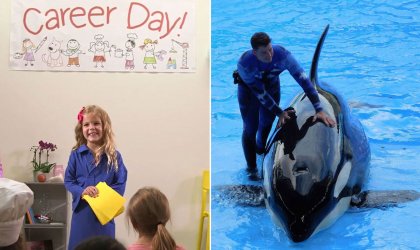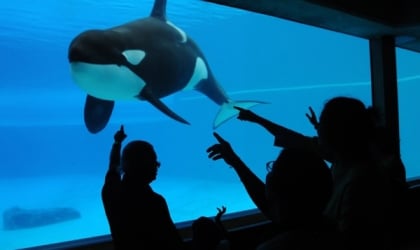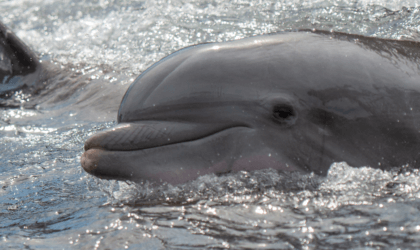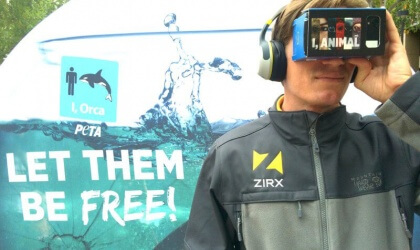When we saw photos of Malia—a 10-year-old orca imprisoned at SeaWorld Orlando—with brown blotches on her white skin, our hearts sank because we’ve witnessed time and again how this painful affliction plays out.
It’s clear that she has an infection, and her lesions appear to have developed quickly and alarmingly.
It’s not known which particular condition Malia is suffering from, as SeaWorld hasn’t released that information. However, it may be a fungal infection, a bacterial infection, or a combination of the two, exacerbated by the suppressed immune system that often results from the stress of captivity.
More than half of all orca deaths at SeaWorld are caused by infections.
In a scathing investigative report by the San Antonio Express-News, it was revealed that infections have killed nearly 150 sea lions, beluga whales, orcas, and other dolphins at SeaWorld parks in the last 30 years. They have been especially deadly for orcas, contributing to 60 percent of their deaths at the facilities.
Malia’s father, Tilikum, and her sister Unna also died of infections in 2017 and 2015, respectively.
Last year, an orca named Kasatka died after suffering from an infection with symptoms similar to Malia’s. According to reports, Kasatka had been plagued by a bacterial lung infection since at least 2008 and her ailing body was covered with lesions before her death. Even during her painful sickness, SeaWorld San Diego subjected her to rape via artificial insemination, making her carry a baby to full term.
Kasatka is dead at #SeaWorld. Time is running out for the other orcas, RETWEET if you want SeaWorld to release them to seaside sanctuaries! pic.twitter.com/MqlnQlx86k
— PETA (@peta) August 16, 2017
Discussing Kasatka near the end of her life, Dr. Jeffrey Ventre, a medical doctor and former SeaWorld trainer, said, “When I saw the image of her today, as a physician, it immediately reminded me of end stage AIDS. She is so immuno-compromised, covered in fungus, it’s clear that she is near death. I hope she passes quickly.”
Captive animals are often deprived of everything that is natural and important to them, and they experience captivity-related health problems as a result.
According to The Merck Veterinary Manual, “Captive marine mammals seem particularly prone to fungal infections.” The stress of captivity may be a contributing factor. When veterinarian Dr. Heather Rally visited SeaWorld San Diego in 2014, she observed many signs of stress, especially among the marine mammals. She saw dolphins with a skin condition commonly linked to a weakened immune system who were still interacting closely with the public, heightened aggression among animals, and orcas who exhibited troubling signs of psychological distress.
Learn more about SeaWorld on The PETA Podcast:
Listen to more episodes on iTunes, Stitcher, and Spotify! Subscribe for new episodes.
Orcas are intelligent animals who, in the ocean, travel up to 140 miles a day with their families, but at SeaWorld, they’re confined to tanks that allow them to swim only a tiny fraction of that distance, often without the company of any family members. Even when these animals aren’t dying of infections in their SeaWorld bathtubs, they’re under undeniable stress, which may contribute to other causes of premature death.
This has to stop now.
You can help Malia and all the other living beings imprisoned by SeaWorld today. Click the button below to ask the company to end all animal acts at its parks and release the animals into seaside sanctuaries, where they could live out their days free from the stress of their prison tanks.




